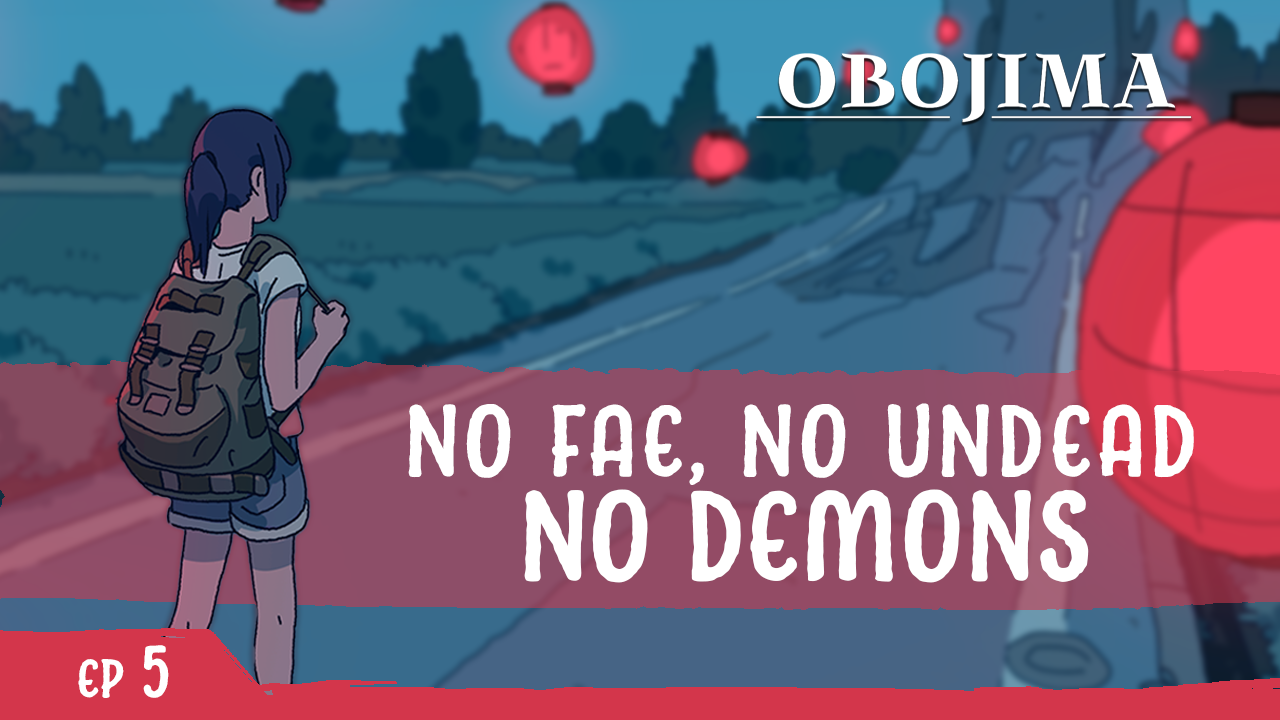
The Obojima Podcast the Blog | Episode 5: The Spirit World in D&D: Spirits and the World Around Them
This blog post was made using dictation summary software, and posted for SEO purposes. If you really want to know what this episode is about, check out the full episode here: https://youtu.be/7rjR2aNrf3s?si=x3y2cK5SlNUE3ihP
Episode 5? Already? Welcome to the blog of the Obojima Podcast! This podcast is a deep dive into the creative process of creating Obojima: Tales from the Tall Grass. First things first, let’s meet our intrepid crew of writers.
-
Jeremiah Crofton - The Creative Director of 1985 Games and the creator of Obojima.
-
Ari Levitch - Head Writer
-
Adam Lee - Head Writer
This week’s episode is a meaty one. The team digs deep into Obojima’s evolving cosmology—from the hierarchy of spirits and the nature of corruption, to how your party might stumble into a misty, half-forgotten temple that only exists at dusk. Also: yes, the train is real.
Let’s jump in.
A Spirit Realm Instead of the Ethereal Plane
First, some table-setting: Obojima doesn’t use the traditional D&D planar system. No ethereal plane. No Feywild. No Shadowfell. Just two overlapping layers of existence:
-
The Material World – where people live, build treehouses, eat mushroom soup, and argue about scooter repairs.
-
The Spirit Realm – an echo of the material, layered on top like mist on a mountain. Most people can’t see it, but it’s always there.
Spirits aren’t ghosts. They’re not undead, they’re their own class of being. They farm, they shop, they pull pranks. They have opinions. Some are ancient and powerful. Others are just little guys. Undead don't even exist in Obojima!
What Spirits Are
Think of spirits as the heart and soul of Obojima’s natural magic. They don’t come from “beyond.” They’ve always been here. Some are animalistic, others are sentient and humanoid, some are objects, and some are just amorphous blobs of energy.
There’s no hard spirit taxonomy, but they loosely fall into a few buckets:
-
Minor Spirits: frogs that glow, sparks that whisper, raccoons that steal your map.
-
Elder Spirits: more like demigods, these beings embody ideals—freedom, change, the seasons. They’re not worshipped, but revered. A friend, not a master.
-
Corrupted Spirits: colloquially known as demons. These are spirits twisted by grief, destruction, or bad choices in the material world. As far as anyone knows, there's no way to "purify" a demonic spirit once it's turned. The transformation seems to be permanent.
Magic, Belief, and Power
Obojima’s magic system doesn’t run on divine means. There are no gods or clerics in Obojima.
-
Warlocks might forge bonds with specific spirits—but it’s more like making a deal with a fire elemental for help in exchange for carrying its ember, rather than becoming its minion.
-
Magic itself is shaped by your kinship with the spirits—live your tenets, grow your connection, and your spells reflect that.
Spirit Realm Design: Echo, Time Capsule, and Mirror
The team described the spirit realm as an “architectural echo” of the material world—old ruins may still stand tall there, forests may stretch where towns now sit. It’s a time capsule, and different areas might reflect different eras. The deeper you go, the older it gets.
That leads to compelling mysteries: Why is there a four-story temple in the spirit realm where there’s just marshland in the material world? Why is this entire village perfectly preserved, but filled with sad, silent spirits?
Buildings don't just spring up in the Spirit Realm when they're built in the Physical Realm. In the spirit realm, a building might appear gradually, like condensation on glass. Slow, flickering, half-real until it fully forms.
Corruption, Conflict, and Narrative Stakes
One of the more in-depth ideas talked about was how spirits can be changed by what happens in the Physical Realm. Cut down a sacred grove, and the spirit of that forest might become twisted, enraged, unrecognizable.
This opens the door to:
-
Moral storytelling – players must weigh action vs. consequence.
-
Dynamic antagonists – that serene water spirit? She’s now a haunted, storm-lashed lake monster.
-
Epic redemption arcs – can corrupted spirits be healed?
This sets up the Corruption, the weird mass slowly spreading over the island, as not so much “evil” in the D&D alignment sense. It’s imbalance. Loss. Decay. But it feels like evil—and it hurts.
The Wandering Line – Spirit Realm Transportation
Oh, and did we mention the train?
Yes. Obojima has a train. It's called The Wandering Line.
It literally passes through both the material and spirit realms. Some stations only appear in one. Some passengers don’t breathe air. Some tickets can’t be bought.
It’s a surreal, narrative-flexible way to shift between realms, introduce new quests, or dump your party into a city that technically doesn’t exist.
Need to go somewhere you shouldn’t be able to reach? Hop on the Line—if it stops for you.
Perception, Poltergeists, and Strange Interactions
Lastly, the team explored how spirits interact with the physical world. Most spirits can’t just grab things or shout at mortals… unless the veil between worlds is thin. Then? Strange things happen:
-
Poltergeist effects—falling mugs, rustling maps, cold gusts.
-
Shared buildings—a tavern that exists in both realms might have ghost patrons at midnight.
-
Spiritual footprints—a scorched mark where an elder spirit passed through.
It’s not just a ghost-story flavor. These mechanics can affect gameplay. Is that chest locked… or is it locked spiritually?
TL;DR:
The Obojima team is redefining how spirits work in TTRPGs—not as monsters or gods, but as living, breathing parts of the world with their own priorities, drama, and pasts.
Your cleric doesn’t follow a god—they practice a way of being.
Your antagonist isn’t a demon—they’re a friend who went too far.
And that train? It might be taking you home… or somewhere you need to be.
You can watch the whole episode here: https://youtu.be/7rjR2aNrf3s?si=x3y2cK5SlNUE3ihP


